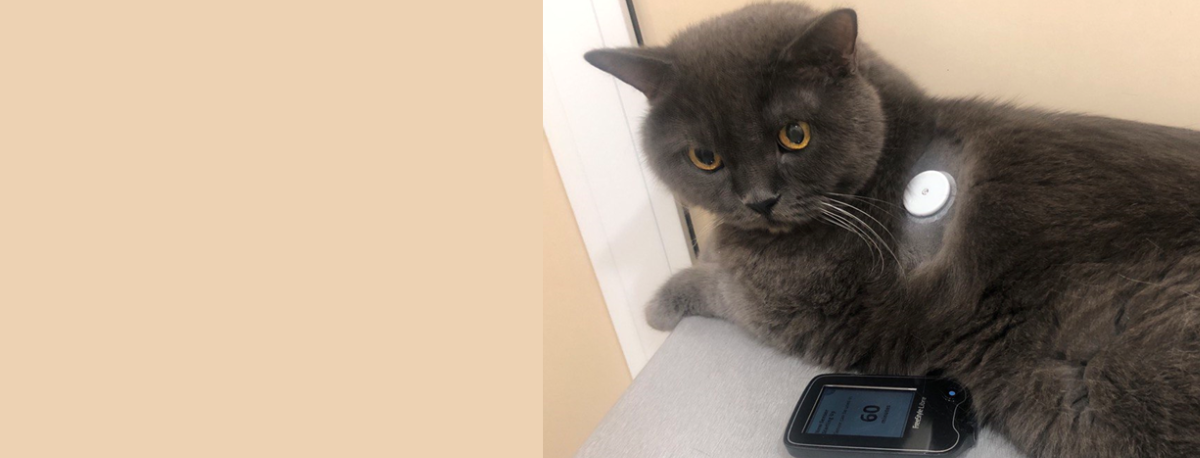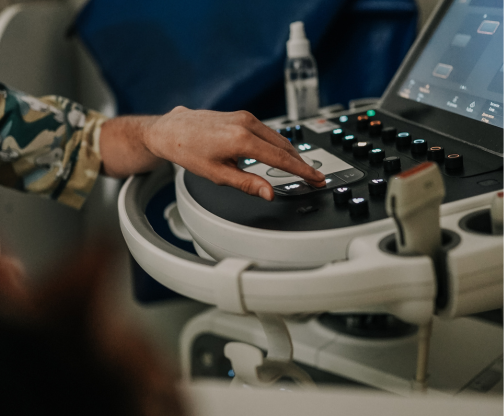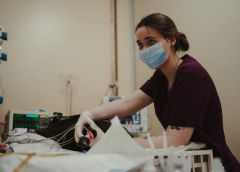Diabetes mellitus
Опубліковано
18.01.2024
Diabetes mellitus
Most often, cats aged 4 -14 years (average age 7-9 years) are affected, and there are isolated cases of diabetes mellitus in cats up to 1 year old.
Symptoms of diabetes mellitus:
- increased appetite
- increased thirst
- frequent urination
- weight loss with increased appetite
The main causes of diabetes in cats:
- obesity
- previous pancreatitis
- use of drugs from the group of glucocorticosteroids and progestogens
The diagnosis of diabetes mellitus sounds like a verdict. After confirming the diagnosis, the veterinarian endocrinologist faces a difficult task.
Finding an effective treatment is, of course, the most important factor for successful disease control, but it is also important to provide support to the owner of an animal with diabetes.
Insulin therapy, diet, and exercise are the key to a favorable outcome. The selection of an insulin dose is a rather lengthy process that requires a lot of time and effort on the part of both the owner and the animal. Constant blood glucose monitoring and insulin injections twice a day are undoubtedly strong stressors for animals, especially cats.
After receiving the Cat Friendly Clinic status, our doctors continue to find new ways to minimize stress for their patients. To make life easier for the owner and his/her pet with diabetes, we offer an alternative to daily puncture of ears, lips and paw pads - the continuous monitoring system Freestyle libre.
This is a faster and more painless way to monitor blood glucose levels in an animal with diabetes. The device is based on the latest medical engineering developments, which avoids regular punctures. This allows us to obtain a blood sugar sample throughout the day, which in turn helps us to control or adjust insulin doses without pain and stress;
The device consists of two components:
- A sensor that is attached to the skin with a tiny needle (about 5 mm) in the subcutaneous space, which allows you to read blood glucose levels in the intercellular fluid.
- A scanner that displays the data collected by the sensor in one second.
- The sensor is installed at an appointment with an endocrinologist. Before the procedure, the doctor together with the owner chooses the place to install the sensor (neck, withers). The ideal place has not been fully researched, but the basic rule is that the surface should be flat and inaccessible to the pet. The hair in the installation area is shaved and treated with an alcohol wipe.
- The procedure for installing the sensor does not require anesthesia, sedation or pain relief and takes no more than 5-10 minutes, including preparation for installation. The sensor itself is attached in seconds, a procedure similar to chipping or vaccination, but less painful. In most cases, the animal does not react to the implantation.
- Due to the constant growth of the animal's hair, medical glue can be used to improve the adhesion of the sensor to the skin.
- The sensor data has a minimum error of blood glucose level (up to 1.1 mmol/L).
- The device installation time is 5-14 days on average, after which the sensor needs to be replaced. You can use the device continuously or set it up periodically for dose adjustment.
For a consultation on sensor installation, call the clinic or make an appointment with an endocrinologist.
Схожі статті

Preparation for ultrasound examination (ultrasound)
It is important to remember that proper preparation of the animal can significantly facilitate the abdominal ultrasound process. By performing this procedure, the doctor can detect possible problems in time and provide proper treatment. High-tech ultrasound is one of the ways to quickly and informatively diagnose and ensure a long and healthy life for our pets.

Brachycephalic syndrome in dogs and cats.
What exactly is brachycephalic syndrome and how to live with it, how to prevent complications for the body that this syndrome can lead to?

WHY ARE DOCTORS NOT ALL-POWERFUL?
A good doctor is worth its weight in gold. Everyone understands this and can spend years looking for the best one, and when they find one, they will expect miracles.

Allergy
Allergy

SYNDROME OF TIRED TANKLES IN CATS
Tired antennae of a cat or What do you know about fatigue?

Bacterial myocarditis
This disease is extremely rare in dogs. In cats, it is even less common - 0.006-0.018% of cases.

How to protect home lovers from radiation damage.
In recent days, we have received many calls asking for advice on the need to protect animals during a possible radiation exposure.

STERILIZATION AND CASTRATION OF CATS AND DOGS
Such operations do not affect the change of the animal's character. They can be done from an early age, in particular from 8 weeks. Convenience, first of all for the animal, is that the young organism has the ability

Side effects of antiparasitic drugs
The need for tick and flea treatments for pets is a well-known fact.

How you can help calm cats and reduce stress today
the head of the felinology department, tells us.

